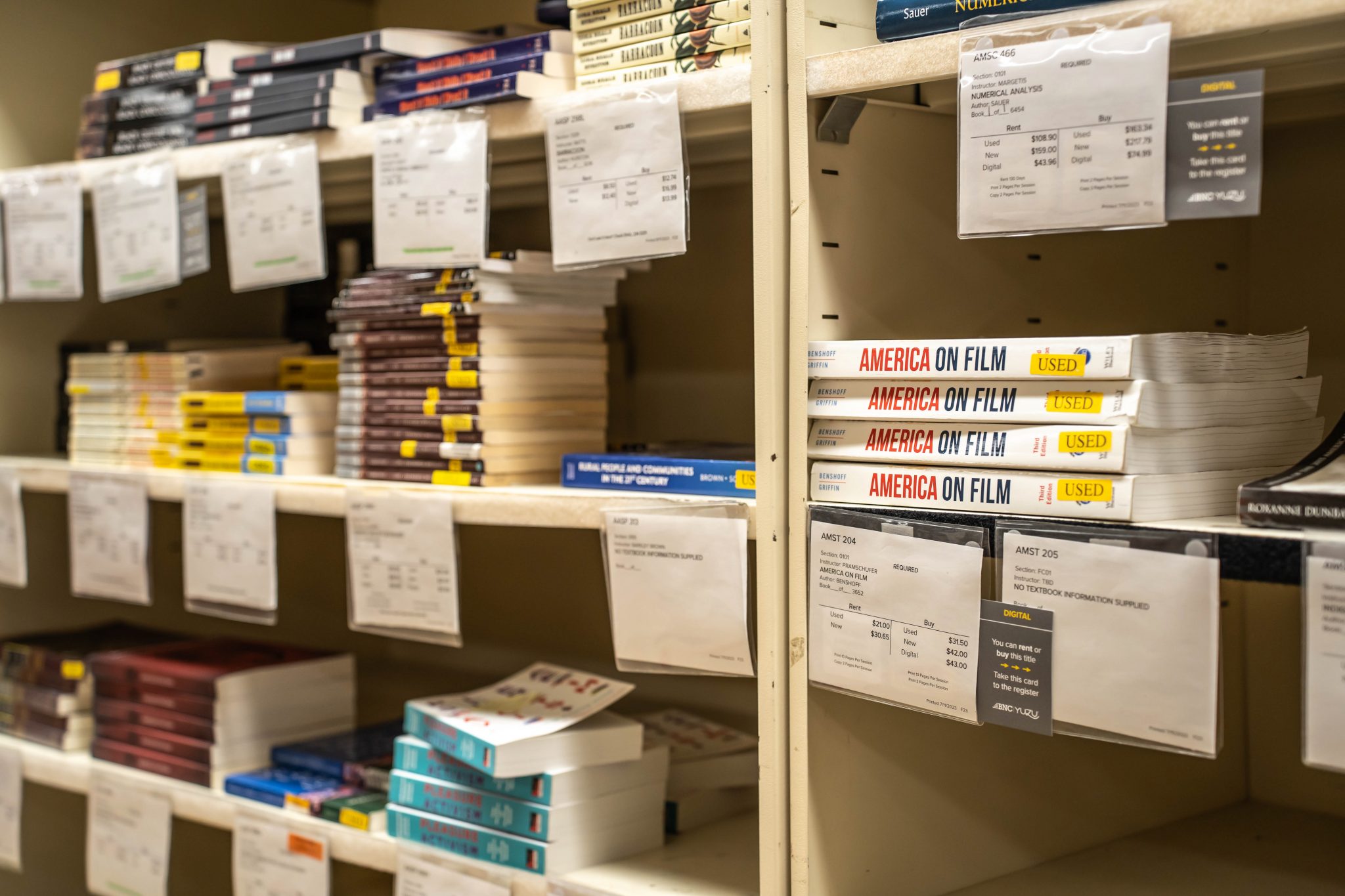Views expressed in opinion columns are the author’s own.
It’s the beginning of the semester, and you take a look at the list of books needed for your classes. You do a double-take. Your grand total is a whopping $1,000 — not far off from the University of Maryland’s estimate of $1,250 on books and supplies a student.
Reducing textbook fees is not just a wallet issue, it’s an education issue. The cost of course materials has a direct and negative impact on academic success. Students report the cost of their course materials affects the institution they chose to go to, their major and their minor.
Surveys show that more than half of students have taken fewer courses or skipped registering for them altogether because they couldn’t afford the required books, and 41 percent admitted their grades have suffered due to this gap in accessibility. This makes it abundantly clear the high cost of textbooks is a major obstacle to student academic achievement.
This isn’t just a problem at this university. Full-time undergraduate students spend an average of $1,000 to $1,220 on books and supplies a year, according to the College Board. This is equal to working about 60 to 80 hours at Maryland minimum wage to cover the cost.
As students, when we’re already paying tuition, housing and dining expenses and daily living costs, the additional thousand of dollars can be yet another overwhelming expense. To aid their students, all faculty should make efforts to provide all students with more affordable options to lessen their financial load.
Ensuring that all students have guaranteed access to required course materials is essential for creating an educationally-level playing field. By offering avenues to make course materials freely available, faculty can help remove financial barriers, support academic achievement and foster equity across all programs and departments.
By focusing on the adoption of open educational resources, faculty can provide students with accessible learning materials at little to no cost. OpenStax, Libre Texts and Open Educational Resources Commons all have high quality, free materials ready to be used.
Additionally, Massachusetts Institute of Technology has a program called OpenCourseWare, a web-based publication of virtually all of the university’s course content, showing education at elite institutions is and should be accessible. The program allows students to reduce their financial burden by eliminating the need to purchase expensive textbooks.
This university has already taken steps in this direction by incorporating open educational resources through M.O.S.T Commons, a platform that allows faculty to share, adapt and implement open resources across a wide range of subjects. This university also offers a research guide to help students and faculty find existing open educational resources.
Expanding the use of this resource and making it more mainstream could help normalize open source adoption across departments, reduce financial stress for students and encourage faculty to explore innovative, flexible teaching materials. Furthermore, supporting faculty with training in how to access and find open educational materials would make this approach sustainable and impactful in the long term.
Taking this a step forward, this university could require that every professor provide a free textbook alternative for their students. Faculty members can apply for funding through the Maryland Open Source Textbook Initiative to create high quality digital versions of textbooks. For students who prefer physical copies, this university should create a system where printing classroom materials is free, instead of having to pay 10 to 50 cents a page, depending on the ink. This would especially reduce the financial burden for low-income students.
Funding for free printing could come from reallocating a small portion of the library’s operation budget, redirecting some collections and content funds from lesser-used subscriptions, using part of student library and technology fees and leveraging existing auxiliary printing income.
This should also extend to lab materials. Lab manuals, in particular, are another additional cost, even though many are updated only slightly each year. This university could require departments to provide free, digital versions of these manuals, ensuring that every student has access to materials from day one. For those who prefer a physical copy, the same printing system could apply, allowing students to print the sections they need without the extra financial strain.
Many faculty members have already taken the next steps to reduce the financial burden of course materials. College is already a huge financial investment, especially for low-income students. Students should not need to decide between having a meal and getting the books they need to succeed in their degree.
Providing free textbooks is a matter of fairness, accountability and accessibility. If this university truly wants to support its students, faculty must act now to remove this barrier and ensure that every Terp has the best chance to thrive.
Srijani Chakraborty is a sophomore bioengineering student. She can be reached at schak19@terpmail.umd.edu.



